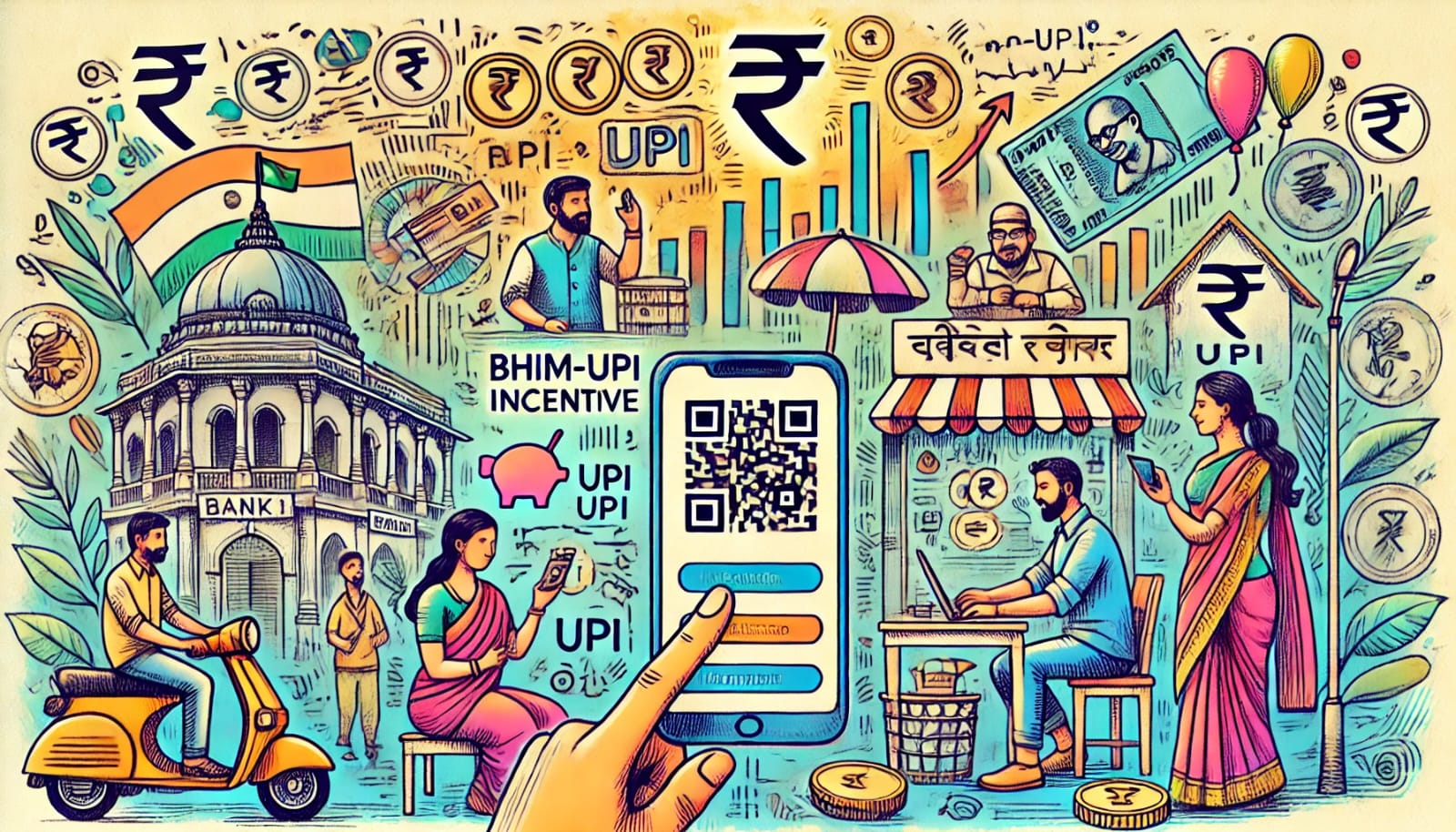The Indian government has consistently championed digital payments as a key pillar of financial inclusion and economic formalisation. The latest Cabinet-approved BHIM-UPI Incentive Scheme for FY 2024-25, with an outlay of ₹1,500 crore, is another step in this direction. The scheme is designed to encourage the adoption of low-value person-to-merchant (P2M) UPI transactions, particularly among small merchants, by making digital payments more accessible and financially viable.
Key Features of the Scheme
- Incentive on Small Transactions: A 0.15% incentive will be provided on UPI transactions up to ₹2,000 for small merchants, ensuring that they do not bear any cost for accepting digital payments.
- Zero MDR Continues: All UPI transactions remain free from Merchant Discount Rate (MDR), keeping costs minimal for both consumers and small businesses.
- Performance-Linked Disbursement:
-80% of the incentive will be reimbursed to acquiring banks immediately.
-The remaining 20% will be conditional upon the acquiring bank maintaining at least 99.5% uptime and keeping technical declines below 0.75%. - Encouraging Rural Digital Transactions: The scheme aims to boost UPI adoption in Tier 3–6 cities and rural areas through solutions like UPI 123PAY (for feature phones) and UPI LiteX (offline payments).
- Transaction Growth Target: The government has set an ambitious goal of 20,000 crore UPI transactions in FY 2024-25, reinforcing its commitment to a less-cash economy.
Why This Matters
This initiative is a significant intervention to strengthen India’s digital payment ecosystem, particularly for small merchants who form the backbone of the retail economy. By covering transaction costs and ensuring seamless processing, the government is creating an environment where digital payments are not just convenient but also financially rewarding for businesses.
The policy also enhances the overall efficiency of the payment ecosystem. By linking a portion of the incentives to banks’ uptime and transaction success rates, the government is driving service quality improvements. A more reliable and resilient UPI network will further accelerate consumer adoption and reduce friction in digital transactions.
Moreover, formalising digital transactions strengthens financial inclusion. Merchants who frequently use UPI will establish digital transaction histories, improving their eligibility for formal credit. This can significantly impact small businesses by expanding their access to working capital and growth opportunities.
The Sustainability Challenge: Balancing Incentives with Long-Term Growth
While these incentives have been instrumental in driving India’s digital payments revolution, the long-term sustainability of this model remains a critical concern. The payments industry—including banks, payment service providers (PSPs), and merchants—needs a revenue model that ensures growth, innovation, and expansion.
For digital payments to thrive beyond government support, the industry must find ways to balance affordability with economic viability. The absence of MDR means that banks and PSPs are not earning directly from UPI transactions, relying instead on government incentives and cross-selling financial products. Over time, this model could limit investment in innovation, infrastructure, and security enhancements.
A sustainable digital payments ecosystem will require a strategic transition from government-backed incentives to a market-driven model. Potential solutions could include:
Tiered MDR structures that ensure affordability for small merchants while allowing financial institutions to recover operational costs.
Value-added services for merchants, such as analytics, credit, and business tools, that generate revenue while enhancing merchant adoption.
Regulatory frameworks that balance growth with commercial viability, ensuring that banks and PSPs can invest in digital payment infrastructure without being entirely dependent on government support.
A Strategic Roadmap for the Future
India’s digital payments story is one of rapid transformation, and government interventions have played a crucial role in driving adoption. However, the next phase of growth must focus on building an economically sustainable model.
For the ecosystem to continue expanding, it is essential to strike a balance between incentivisation and commercial viability. This requires a collaborative approach between the government, regulators, banks, and PSPs to develop a digital payments landscape that is both accessible and financially self-sufficient.
By ensuring that all stakeholders—merchants, PSPs, banks, and consumers—see long-term value in digital transactions, India can transition from an incentive-driven market to a mature, self-sustaining digital economy.





